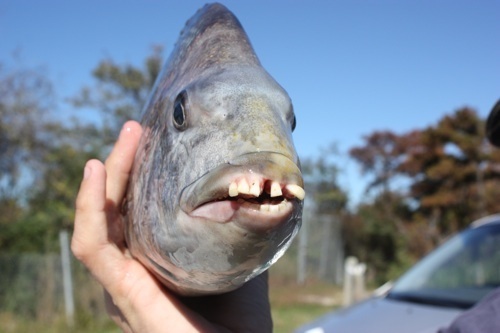

They named it Blobby after its characteristic, and now familiar, look. The group was towing trawling gear (a type of net that is dragged across the ocean floor) and picked up the now-famous fish. marcidu s specimen was discovered about 350 km off the coast of Australia, during a joint Australian-New Zealand expedition in 2003. The blobfish is relatively new to the scientific world. This gives us a clue as to what kind of foods the blobfish likely eats as part of its regular diet. Because they do not have a hard skeleton, they also do not have teeth, which means they have to swallow prey whole. What we do know is that blobfish are almost certainly opportunistic feeders, meaning they will eat whatever falls to the ocean floor. This is likely due to its reclusive nature and difficult-to-access habitat. Little is known about the specific diet of P. It is only when the fish is brought to sea level, and thus a much lower pressure, that it takes on the lovably ugly form that most people are familiar with. At the extreme depths that the blobfish lives, the enormous pressure keeps the fish looking like a regular fish. marcidu s looks like a normal fish while in its regular habitat. This allows it to gently float above the ocean floor.Īlthough the famous picture of the Psychrolutes marcidus makes it look like a pile of wet jello, P. The density of the fish is just less than that of water. Instead, the blobfish’s magic is in its gelatinous tissue. This pressure is high enough that any swim bladder would collapse. But the Psychrolutes marcidus lives at depths where the pressure can exceed 300 times that on the surface. The fish can add or subtract air within their swim bladder to help them float higher or sink lower. Many other types of bony fish have a gas-filled organ similar to a balloon in their body cavity. Blobfish have a unique adaptation that allows them to survive at such great depths: they lack a swim bladder, which is unique to most fish in the world. These small (30 cm) fish are typically found in the Pacific Ocean off the coasts of Australia and Tasmania, often in very deep water at depths of 600 to 1300 meters (up to roughly 4000 feet) in a region known as the bathyal zone.

When chewed, mideodeok squirts water along with a briny ocean flavor.One of the most incredible things about blobfish is where they are able to live. There are also hidden mideodeok, or sea squirts, in aguijjim. Many enjoy spicy aguijjim, especially when having the dish as a late-night snack to go with drinks.Īguijjim is basically braised monkfish lying under a mountain of bean sprouts that complement the dish, with the crisp texture contrasting with the moist fish meat. The dish’s fiery red visual warns of spiciness. The flesh is moist as the fish is braised before being stir-fried with a thick sauce of Korean red chili pepper flakes.
Ugly fish with big teeth skin#
The slimy fish skin is often regarded as a delicacy for its texture, along with the stomach, which tastes similar to tripe.

The texture is often described as being similar to lobster meat.Īguijjim is served in small, bite-sized pieces that are usually bone-in and have the skin left on. The white flesh beneath the black skin is tender and soft. Surprisingly, the fish’s texture is quite the opposite of its appearance.


 0 kommentar(er)
0 kommentar(er)
